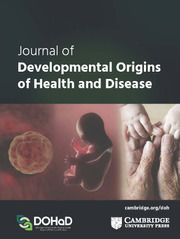 “Chronic stress is depressogenic by altering neurotrophic and neuroinflammatory environments of the organism. The endocannabinoid system controls cognitive and emotional responses related with stress through the interaction with endocannabinoid receptors. β-Caryophyllene (BCP) is a CB2 agonist that exhibited anti-inflammatory, analgesic effects but minimal psychoactive effects. To test if BCP exhibits antidepressant-like action, animals were chronically restrained with additional stressors for 28 days, and BCP (25, 50, 100 mg/kg) was intraperitoneally injected once a day during the stress inflicting period. Then despair related behaviors and hippocampal expression of neurotrophic, inflammatory and cannabinoid receptor levels were measured. To test the effect of BCP on long-term depression, field potentials were measured during the application of lipopolysaccharide and low frequency stimulation. In the tail suspension test and forced swim test, chronic stress-induced despair behaviors were reduced by BCP. Also BCP improved the stress-related changes in the hippocampal expression of COX-2, BDNF, and CB2 receptor expression. In organotypic hippocampal slices, BCP reduced the lipopolysaccharide-induced intensification of the long-term depression. In conclusion, BCP improved chronic stress related behavioral and biochemical changes. These results suggest that BCP may be effective in treating depression and stress related mental illnesses.”
“Chronic stress is depressogenic by altering neurotrophic and neuroinflammatory environments of the organism. The endocannabinoid system controls cognitive and emotional responses related with stress through the interaction with endocannabinoid receptors. β-Caryophyllene (BCP) is a CB2 agonist that exhibited anti-inflammatory, analgesic effects but minimal psychoactive effects. To test if BCP exhibits antidepressant-like action, animals were chronically restrained with additional stressors for 28 days, and BCP (25, 50, 100 mg/kg) was intraperitoneally injected once a day during the stress inflicting period. Then despair related behaviors and hippocampal expression of neurotrophic, inflammatory and cannabinoid receptor levels were measured. To test the effect of BCP on long-term depression, field potentials were measured during the application of lipopolysaccharide and low frequency stimulation. In the tail suspension test and forced swim test, chronic stress-induced despair behaviors were reduced by BCP. Also BCP improved the stress-related changes in the hippocampal expression of COX-2, BDNF, and CB2 receptor expression. In organotypic hippocampal slices, BCP reduced the lipopolysaccharide-induced intensification of the long-term depression. In conclusion, BCP improved chronic stress related behavioral and biochemical changes. These results suggest that BCP may be effective in treating depression and stress related mental illnesses.”
https://www.ncbi.nlm.nih.gov/pubmed/31862467
https://linkinghub.elsevier.com/retrieve/pii/S0166432819313348
“β-caryophyllene (BCP) is a common constitute of the essential oils of numerous spice, food plants and major component in Cannabis.” http://www.ncbi.nlm.nih.gov/pubmed/23138934
“Beta-caryophyllene is a dietary cannabinoid.” https://www.ncbi.nlm.nih.gov/pubmed/18574142

 “Beta-caryophyllene is an odoriferous bicyclic sesquiterpene found in various herbs and spices.
“Beta-caryophyllene is an odoriferous bicyclic sesquiterpene found in various herbs and spices. “As a library of cannabinoid (CB) derivatives with (-)-trans–
“As a library of cannabinoid (CB) derivatives with (-)-trans– “The endocannabinoid system (ECS), modulated by metabolites of linoleic acid (LA), is important in regulating cardiovascular function.
“The endocannabinoid system (ECS), modulated by metabolites of linoleic acid (LA), is important in regulating cardiovascular function. “High mobility group box 1 (HMGB1) is a late phase inflammatory mediator in many inflammatory diseases. Extracellular HMGB1 could bind to many membrane receptors to activate downstream signaling molecules and promote inflammation resulting in cell and tissue damage.
“High mobility group box 1 (HMGB1) is a late phase inflammatory mediator in many inflammatory diseases. Extracellular HMGB1 could bind to many membrane receptors to activate downstream signaling molecules and promote inflammation resulting in cell and tissue damage. “As we learn more about the endocannabinoid system (ECS), our understanding and grasp of the system’s ubiquitous presence is expanding. In light of this, there is also a growing body of evidence for the therapeutic potential of ECS modulation in a range of clinical situations. Strategies include for example manipulation of the
“As we learn more about the endocannabinoid system (ECS), our understanding and grasp of the system’s ubiquitous presence is expanding. In light of this, there is also a growing body of evidence for the therapeutic potential of ECS modulation in a range of clinical situations. Strategies include for example manipulation of the  “Hepatorenal syndrome (HRS) is a life-threatening complication of end-stage liver disease characterized by the rapid decline of kidney function. Herein, we explored the therapeutic potential of targeting the
“Hepatorenal syndrome (HRS) is a life-threatening complication of end-stage liver disease characterized by the rapid decline of kidney function. Herein, we explored the therapeutic potential of targeting the 
 “Interstitial cystitis (IC) is a chronic bladder disorder with unclear etiology.
“Interstitial cystitis (IC) is a chronic bladder disorder with unclear etiology. “The endocannabinoid system (ECS) is comprised of cannabinoid receptors 1 and 2 (CB1R and CB2R), endogenous ligands, and regulatory enzymes, and serves to regulate several important physiological functions throughout the brain and body.
“The endocannabinoid system (ECS) is comprised of cannabinoid receptors 1 and 2 (CB1R and CB2R), endogenous ligands, and regulatory enzymes, and serves to regulate several important physiological functions throughout the brain and body.